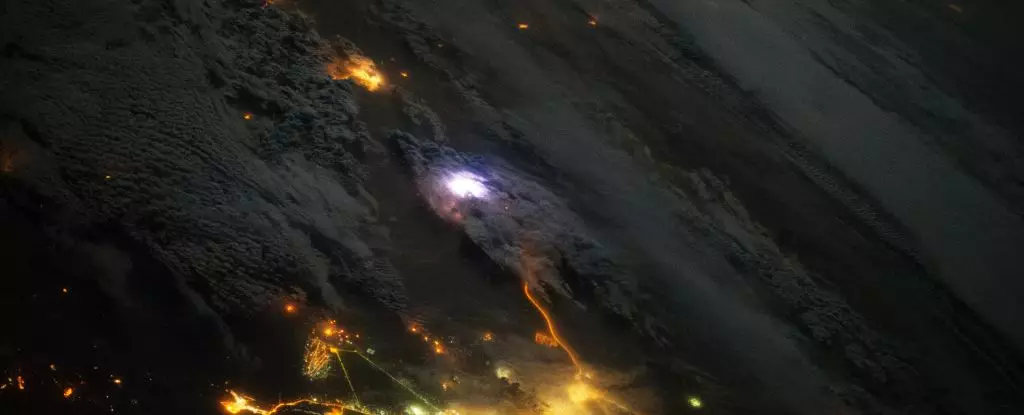Lightning storms are often held as one of nature’s most breathtaking spectacles, illuminating the skies with flashes of electricity and thunderous roars. However, recent scientific insights reveal that these storms do far more than merely light up our atmosphere; they have a profound impact on the space environment surrounding Earth. This article dives into the connections between terrestrial lightning and the high-energy particles known as “killer electrons,” which pose significant risks not only to our satellites but also to astronauts venturing into the great beyond.
The term “killer electrons” refers to high-energy particles that travel at speeds approaching that of light. Aerospace engineer Max Feinland from the University of Colorado, Boulder, has brought this unsettling phenomenon to light in his research. These electrons, far from being benign, can penetrate the metal shielding of satellites and disrupt vital electronic circuits. In addition to potentially compromising space machinery, they also pose health risks to astronauts who could be exposed to dangerous doses of radiation during their missions.
To better understand the gravity of this issue, one must first consider the structure of Earth’s magnetic environment. The Van Allen radiation belts, two doughnut-shaped zones surrounding our planet, are crucial for protecting us from solar winds and cosmic rays. Yet, they are not impenetrable; high-energy particles like killer electrons can escape from these belts. Their inherent danger lies in their tendency to traverse space indiscriminately in all directions, making them a significant hazard for various technologies operating in low-Earth orbit.
Recent research has uncovered unexpected interactions between lightning events and the behavior of killer electrons. By analyzing satellite data, scientists observed clusters of these high-energy particles within the inner radiation belt, which was previously thought to be a stable environment devoid of such fluctuations. Feinland’s retrospective study revealed that between 1996 and 2006, there were 45 documented surges of high-energy electrons, many of which coincided closely in time with lightning strikes in the atmosphere.
Lightning storms generate electromagnetic waves termed whistler waves, which ripple through the ionosphere into the radiation belts. These waves have the potential to instigate a chain reaction, whereby lower-energy electrons gain momentum and energy, eventually transforming into their more dangerous relativistic counterparts. This surprising connection between weather on Earth and the behavior of particles in space underscores how interconnected our universe really is.
Understanding the nexus between lightning events and the generation of killer electrons holds significant implications for future space exploration. With the increasing frequency of satellites and crewed missions to low-Earth orbit, knowledge of when these high-energy particles are likely to be most prevalent is crucial for safeguarding space operations. The unpredictability of lightning storms introduces an element of risk previously not fully integrated into risk assessment for astronauts and their equipment.
Furthermore, the research suggests that conditions fostering the release of killer electrons might be intricate, likely involving interactions with solar activities like solar flares or coronal mass ejections. Identifying these conditions and establishing predictive models will require further investigation and sophisticated analysis of environmental data from both Earth and space.
As we delve deeper into this field, we will need to consider not just how to shield astronauts and equipment from killer electrons but also how to better comprehend and predict their occurrence. This understanding will fundamentally alter our awareness of the various forces that govern the relationship between Earth and its surrounding space environment.
For astronauts, the message is clear: during a lightning storm, it might be wise to take shelter—though in the context of outer space, this is easier said than done. The insights gleaned from research like Feinland’s provide us with critical knowledge that could mean the difference between safe space travel and exposure to perilous particles in an otherwise dynamic, unpredictable sky.
The interaction between lightning storms and space weather reveals the complex relationship of terrestrial and cosmic phenomena. As we continue to explore this relationship, our approaches to technological safeguards and astronaut safety will likely evolve, aligning with our quest for knowledge and exploration beyond Earth. The realm of high-energy particles adds a layer of complexity to our understanding, making it imperative that future research digs deeper into this fascinating and vital intersection of meteorology and space science.

